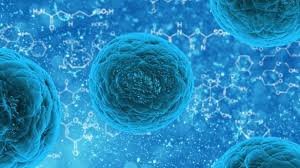Need for the young and healthy to come forward for stem cell donation
May 27, 2019 | Monday | Views
Stem cell donation, while it's a slightly tedious procedure, still could be life-giving to an ailing patient. This article briefly talks about the procedure of stem cell transplant and donation.
Representative Image
The use of stems cells is the new frontier that is slowly changing the face of disease management. These ‘miracle’ human cells have the restorative and transformative abilities to change into any type of cells and treat many diseases. While embryonic and cord stem cell therapy is being extensively researched in laboratories, stem cell transplantation is a widely employed approach globally to treat diseases and cancers of the blood. For thousands of patients suffering from these blood cancers and genetic blood disorders such as Thalassemia, sickle cell anaemia and Aplastic anaemia, the only hope is a Bone Marrow or Peripheral Blood
Stem Cell Transplant, which are procedures in which the patient receives healthy blood-forming cells (stem cells) from a family or unrelated volunteer donor to replace their own that have been destroyed.
A Bone Marrow Stem Cell Transplant involves the relocation of these blood-forming stem cells which are collected from donor’s bone marrow and later transfused in the patient’s system, while Peripheral Blood Stem Cell Transplant involves harvesting these blood-forming stem cells
from the peripheral blood from the donor. In the current era, about 95% stem cell transplants are done using peripheral blood stem cells.
Anyone who is young and healthy can volunteer to donate stem cells by registering in one of the leading stem cell registries in India. These registries are well networked and a transparent and equitable
allocation of stem cells is assured.
For the bone marrow donation, the donor has to go through a surgical, procedure involving anaesthesia and drawing of the bone marrow from the back of the pelvis. The donor experiences
a slight discomfort that goes away within two weeks following the bone marrow transplant procedure. The stem cells and bone marrow lost are completely replenished within 2-3 weeks.
Another process involves collecting stem cells circulating in the blood. In this process, the volunteer is given an injection called Granulocyte Colony Stimulating Factor (GCSF) to increase the number of stem
cells present in the blood. The stem cells are collected after the injection is administered for five consecutive days. This is the preferred method of collection for stem cells. This does not require admission
or Anesthesia and the donor can go home the same day. This process typically is like blood donation.
Following the transplant, the patient’s blood and the immune system is regenerated using the donor stem cells, thereby increasing the chance of curing the disease(e.g.70-80% success rate as a result of a transplant in Thalassemia and Aplastic anaemia) or significantly increasing
survival rates (e.g.50-60%increase in Multiple Myeloma and Leukemia patients).
Registering as a stem cell donor involves a quick test called Human Leukocyte Antigen (HLA) typing aimed at future matching blood types of the donor and patient, should a transplant be needed. Only about 20-30 % patients get a completely matched donor from family while majority depends on unrelated donors.
Every volunteer counts as each HLA type is unique and therefore may be the only match for someone in need of stem cells. Currently, there are around 2.8 lac registered stem cell donors in the country. In order to address the burden of blood cancers and disorders in India, a tenfold increase in the number of donors is needed. This is only possible when myths surrounding stem cell donation are dispelled and people acknowledge that a single donation of stem cells involving minimal pain can save a life.
Once a volunteer registers it is crucial to uphold the commitment when the opportunity to donate arrives, as someone’s life depends on it. It is important that family members support and encourage young volunteers in their family make the donation.
Those who have donated stem cells and saved lives believe that their experience has left them joyful and fulfilled. It is time that younger, healthy Indians come forward to donate stem cells and save lives
and family members support their pledge.
- Dr. Shrinath Kshirsagar, Hematologist (Global Hospital, Parel, Mumbai)










